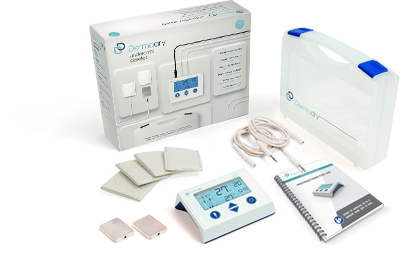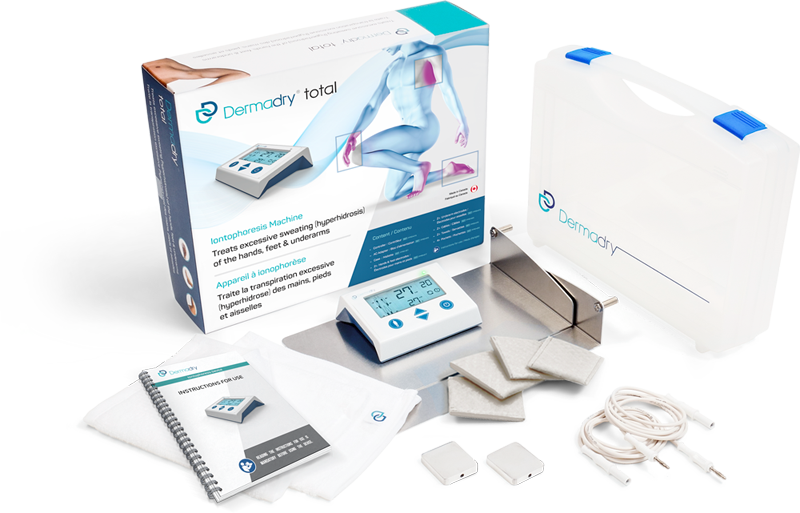Sweating While Eating: Gustatory Hyperhidrosis
Dermadry Team
Why do I sweat when I eat?
Sweating while eating is pretty common, particularly with hot and spicy foods, and foods that require a lot of energy to break down (highly processed and protein-rich foods). It’s also quite a common response when drinking hot beverages that may lead to a rise in your body temperature, which triggers a sweating response. Alcohol is also a known trigger for excessive sweating, as it widens the blood vessels once consumed, which causes the body to release heat.
Many have experienced sweating as a response to consuming certain types of hot, spicy, acidic, sugary, and sour foods and beverages. Some may even experience sweating as a response to eating large amounts of food at one time, sometimes colloquially referred to as the “meat sweats”.
This type of sweating is no cause for alarm, and those seeking to reduce the amount of sweat they produce while eating, may want to seek out their “triggers” and identify the foods, ingredients, or liquids causing a sweating response and cut back on these. Some may also be predisposed to sweating while eating, and may just be a genetic predisposition, and in this case is also no cause for concern.
What is gustatory hyperhidrosis?
Gustatory hyperhidrosis, also known as Frey’s Syndrome, is sweat triggered by food. It is a type of secondary hyperhidrosis, meaning excessive sweating that is secondary to another underlying condition.
Those with gustatory hyperhidrosis will sweat when eating, seeing, dreaming, thinking, or talking about food. The symptoms of this condition are excessive sweating from the craniofacial region (head and face) and facial blushing (reddening of the skin).
What is the cause of gustatory hyperhidrosis?
Gustatory hyperhidrosis is generally caused by an underlying medical condition, such as diabetes, viral infections affecting the face, such as Bell’s palsy or shingles, tumors, Parkinson’s, or injury to the face. However, It is most commonly the result of surgical trauma to the parotid gland, which is a salivary gland located on each side of the face (in front of the ears). In this case, it is often referred to as “Frey’s Syndrome”.
In the event that this gland is damaged during a surgical procedure, it may lead to a “mixup” in the body. In an attempt for the nerve to heal itself, it may get mixed up with other nerves (in this case those that send signals to the sweat glands), causing a person to produce sweat instead of saliva. This will lead to your nerves sending the wrong signals to your glands, leading to a sweating response, rather than a salivating response when consuming or thinking about food. If only one of the parotid glands is damaged (as is often the case), it may lead to sweating on only one side of the face/head (unilateral).
Whether you realize it or not, the body produces extra saliva when eating, and salivating is a normal response to thinking about food or preparing to eat a meal. This is the body preparing itself for the digestive process. While you may experience sweating as a response to eating certain foods, what distinguishes gustatory hyperhidrosis from just regular sweating, is that it is the result of an underlying condition. The amount of sweat produced and it’s constant uncontrollable presence is also what distinguishes it from a “normal” bodily response.
How is gustatory hyperhidrosis diagnosed?
If you are experiencing unexplainable excessive sweating while eating, or a sudden onset of excessive sweating while eating, then you will need to visit your doctor. A doctor can make a diagnosis based on medical history, a visual test (noting physical characteristic symptoms), and a starch-iodine “sweat test” to see which sweat glands are overactive. Further testing may be required if the gustatory hyperhidrosis is the cause of an underlying condition. No cure or permanent treatment is available, but based on their findings, they can provide the appropriate guidance and treatment.
How can I treat gustatory hyperhidrosis?
Similarly to other types of hyperhidrosis, gustatory hyperhidrosis is in itself a harmless condition. However, as gustatory hyperhidrosis is the result of an underlying condition, it is best to seek out medical advice and speak to a medical professional to rule out and identify any underlying causes. By treating the underlying condition, the sweating may subside.
Those seeking to treat their excessive craniofacial sweating as a result of gustatory hyperhidrosis may be prescribed several treatments for hyperhidrosis, including antiperspirants, systemic medications, and Botox injections. These temporarily treat excessive sweating, as there is no cure for excessive sweating.
For some, gustatory hyperhidrosis is not a bother and has no effect on their daily life. However, for many, gustatory hyperhidrosis can be a major nuisance and can lead to embarrassment, and treating the condition may lead to an improvement in the quality of life of the individual who is affected.
To learn more about excessive sweating conditions, visit our hyperhidrosis page!























